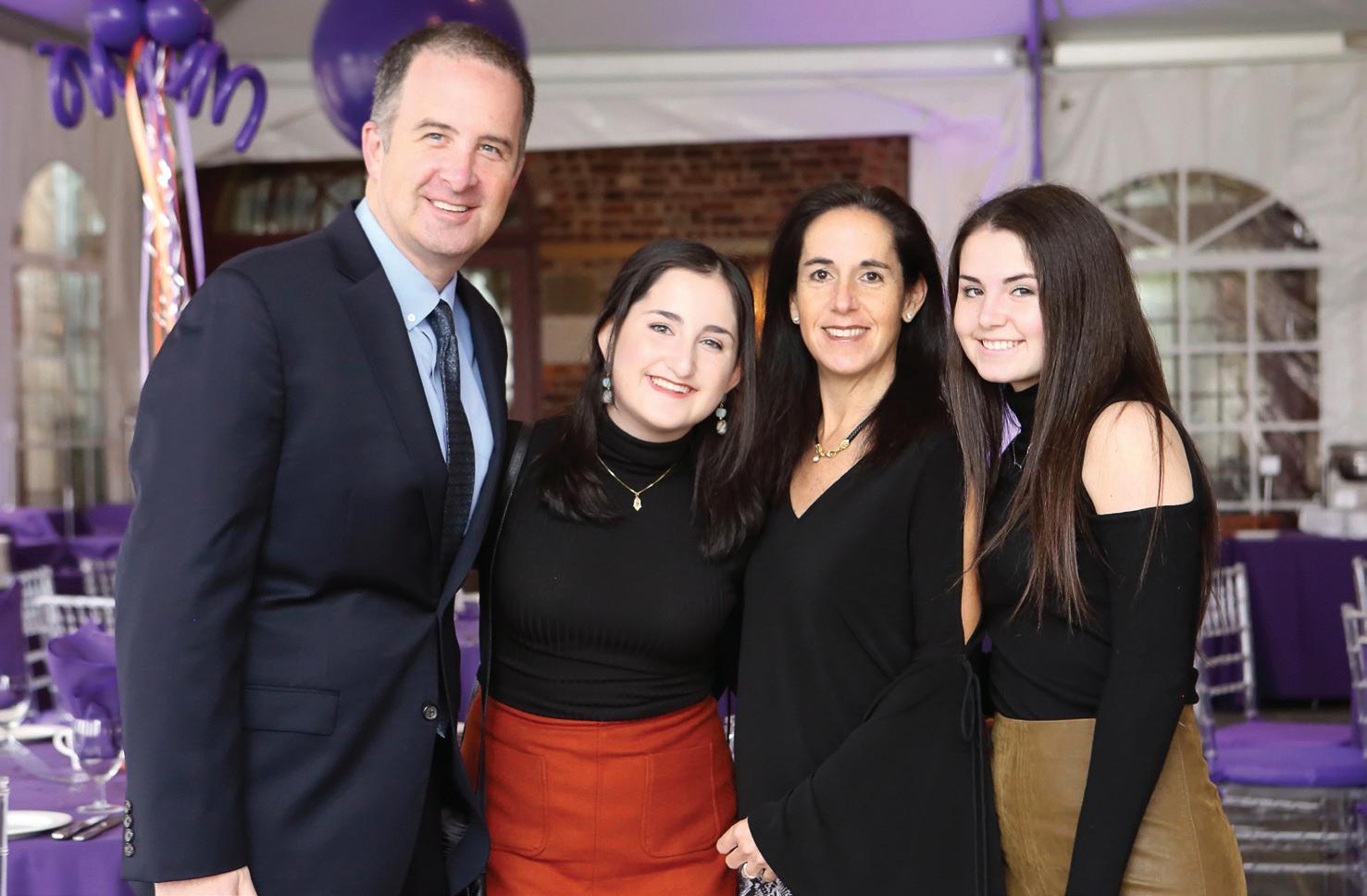
5 minute read
CELEBRATING 20 YEARS OF MIRACLES
At right: The Hirschmann family: Jonathan, Lauren, Hayley and Jessica; below, center; a happy family at a Miracle Walk; bottom, the Brooker family: Johnnie III, Johnnie Jr., Annaya and Ayanna.




FRIENDS AND GRATEFUL FAMILIES HAVE WALKED TO SUPPORT THE NICU FOR TWO DECADES.



Twenty years ago, the Neonatal Intensive Care Unit (NICU) at Saint Barnabas Medical Center (SBMC) had 56 infant beds in 7,500 square feet. Th e preemies there survived and thrived at rates competitive with much larger NICUs around the world.
Twenty years ago, Hayley Hirschmann gave birth to premature twins in that space. While one twin, sadly, survived for only a few hours, Hayley’s daughter Lauren—born at 25 weeks and weighing just one pound, 11 ounces—spent 96 days in the NICU and was then able to go home.
Just months later, Hayley and her husband had an idea for giving back to
the SBMC NICU. Th eir brainstorm: the Miracle Walk, a combination fundraising event and family reunion for NICU alumni and their families and friends. Hayley, a clinical psychologist, and her husband, Jonathan, who has a background in marketing, hoped to raise a million dollars for the NICU within 10 years.
Flash forward 20 years: Hayley’s daughter Lauren is now turning 20 and is a happy, healthy college sophomore. Th e SBMC NICU has 56 beds in a 37,000-square-foot space and cares for about 1,100 babies a year, with infant survival rates among the best in the nation.
And about 2,000 people take part in the Miracle Walk each year. Th e walk raised its fi rst million dollars in less than fi ve years and has now raised more than $6 million in total.
Th e money has helped the NICU aff ord additional state-of-the-art technology and move into its new, larger space. “Th e new space is fantastic and provides a lot of niceties for the families,” says Hayley. “But none of that would mean anything without the amazing staff .”
SAVING BABIES
Over the past 20 years, the NICU has continued to evolve. A major focus has been family-centered care. “We used to refer to families as ‘visitors,’” explains Kamtorn Vangvanichyakorn, MD, Director of Neonatal-Perinatal Medicine and Pediatrics, who goes by “Dr. Kamtorn” and who joined the NICU in 1992.
“But we’ve changed how we engage with families,” she says. “Parents are parents, not visitors, and they can be with their baby 24/7, talking to them, touching them. Nobody is better for that baby than family.” Now, there are rooms for parents to stay overnight and other rooms for mothers to breastfeed. Th e NICU also has a Family KAMTORN VANGVANICHYAKORN, MD Advisory Council
SHYAN SUN, MD, DCH, FAAP
REMEMBERING A DEVOTED NICU DOCTOR
Saint Barnabas Medical Center mourns the passing of a pioneer who represented all that is good in medicine: Shyan Sun, MD, DCH, FAAP, former Director of Neonatology, SBMC, and Clinical Professor, Pediatrics, Rutgers-New Jersey Medical School. Said Dr. Sun at his retirement, “I have been blessed to devote my days to something I am passionate about: caring for the babies.”
(FAC), chaired by Hayley. “We have a NICU buddy program,” Hayley explains. “We match trained graduates in the program with new NICU families to be supportive listeners and help.” Th e council meets monthly to discuss new ways to help NICU families and staff .
Th e NICU has been a regional center since 1993 and certifi ed to perform major surgery on even the tiniest babies born there and infants who are transported to SBMC from other hospitals.
Miracles happen frequently. “I think the smallest baby we’ve saved weighed less than 12 ounces,” says Dr. Kamtorn proudly. “Some other units won’t even attempt to save babies that small. “We don’t only want to save the babies, we want to save them well,” she continues. “We not only have an extremely high survival rate, but we have a disability rate lower than most other places, too.”
Th is year, the NICU has been dealing with the COVID-19 pandemic. “Th e fi rst COVID mom who delivered here was very sick. She was in the ICU, pregnant with twins, and on 100 percent oxygen,” says Dr. Kamtorn. “Th e babies were putting pressure on her diaphragm.” Th e twins were delivered at 28 weeks and both mother and babies survived and thrived.
GIVING BACK
Ayanna Mishoe-Brooker gave birth to her daughter prematurely 11 years ago. Testing had determined that her daughter had hydrocephalus—a buildup of fluid in the brain—and several doctors had recommended that she terminate the pregnancy.
But Ayanna, an attorney, is also an associate minister, and her husband is a pastor. “We believe only God has the fi nal say in how we should proceed with our child,” she says. Th e couple decided to continue the pregnancy.
Ayanna consulted many specialists for advice, and what she remembers most vividly is what Dr. Kamtorn said. “She told me that my daughter would be OK, and that I would be OK. Th at still resonates with me. I trusted her with my baby.”
Today, says Ayanna, her daughter Annaya is “vibrant, smart, active, top of her class and creative.”
Ayanna is a longtime member of the FAC. “Every NICU story is different, but you still need someone there who’s been through it to hold your hand and understand what you’re going through,” she says.
Th ere was a big celebration when the Miracle Walk reached its 10th anniversary in 2010, and Hayley and Dr. Kamtorn were hoping for a big party to celebrate the 20th anniversary this year. Th e pandemic changed those plans, and this year a virtual walk was planned for October 11 rather than an in-person event at Verona Park as usual. However, the enthusiasm for the event was undimmed.
Ayanna and her entire family planned to participate in the Miracle Walk, as they do every year as Team Brooker. “It has been such a great time to see all of the miracles, from those in baby carriages to college students,” she says. “Each step I take as we walk around the park I’m thankful.”
To learn more about the Miracle Walk and to read more NICU stories, visit www.miraclewalk.com. To learn more about the NICU at Saint Barnabas Medical Center, visit www.rwjbh.org/sbmcnicu.










